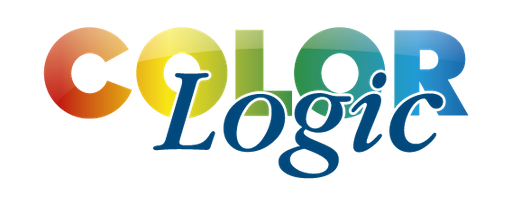ColorLogic News
How to Reduce Waste and Save Money with Color Management

ColorLogic GmbH
22 April 2021
A Q & A with Dietmar Fuchs, ColorLogic’s Product Manager, on why Color Management is not only key to the best possible colors in printing but also for reducing waste, too. Below are some steps your business can take immediately to score points to going green.
What is the biggest reason for waste in the printing industry?
One of the greatest causes of waste are prints which do not meet the customers’ expectations, resulting in reprints. These errors are often due to incorrect or non-existent color management.
Today the print industry is extremely diverse – there is everything from digital printing to packaging and industrial printing such as ceramic and wood printing, wallpapers and textiles. Color management is very important in all those sectors. However, there is no single quality standard which you can work with; it’s all individual, and each printer prints colors differently.
What’s the first thing a printer can do to achieve a more sustainable production workflow?
It all starts with making sure the printer is in a good calibration state and prints reliably. Additionally, you need to describe how a printer prints colors – that’s what we call characterization or fingerprinting. We begin by printing a test chart, which may contain hundreds or even thousands of color patches, from the printer. The next step is to measure the test chart with a spectrophotometer. The measurement data is then fed into ColorAnt to analyze and optimize the measurement information.
Once the measurement data is optimized, we can use it to build quality ICC profiles using CoPrA. Furthermore, we can use the ICC profiles that we created, to build devicelink profiles for higher-end quality conversion. Then, when you get your print files from a design agency or prepress house, it can be color converted using our automatic color server, ZePrA. ZePrA will match colors throughout your printing process and you can print at a high quality which matches your desired intention.
Can you give us a scenario of how color measurement can reduce waste with multicolor printing or extended color gamut (ECG)?
Perhaps your client has a certain package that was printed with CMYK. The next time the client says they want to reprint, they may want the magenta switched with a red color instead. This typically means you have to go through the process of printing a test chart first on your machine, getting good measurement data, and then creating an ICC profile. This results in an unnecessary amount of time and material.
However, if you or your client, have measurement data already from your desired red – from a Pantone color book, for example – you can exchange that new process color in the measurement data that you have already. By using a standard CMYK plus orange, green and violet – a seven-color printing process – you can simulate all sorts of colors simultaneously without having to change the inks.
That is a great ink-saving mechanism because it means you can get several jobs with different spot colors on one sheet. The requirement of course, is that you have good color management that can perform this conversion from Pantone and other spot colors to your printing process.
The process of printing a characterization test chart, making sure the press is in perfect condition, inks are at the correct level, and so on, can easily take one day of work on a big printing press. This can be avoided by simulating how that red could replace the magenta.
ColorAnt is able to predict how this red will overprint with all the other colors. Additionally, it can give you a simulation of what it would look like. Then you can create an ICC profile from that new virtual measurement data without really printing it on your press. Thus, saving you time, ink and paper. Next, you could create a proof print to show to a client before working on your press to exchange the red. Another alternative is printing it right away with the profile and the changed ink in the press. Therefore, saving a lot of time by avoiding creating new fingerprints.
So you are saying ColorAnt can help reproduce Pantone colors without facing the potential waste created by setting up, printing and cleaning with additional special inks?
Yes.
What are some other eco-friendly features available with immediate results?
There is the SaveInk feature in CoPrA. CoPrA creates DeviceLink profiles which can be used for ink saving. One example, is a DeviceLink profile which converts from CMYK to CMYK, in one step without having to go through a profile connection space, which is an L*A*B* representation of the colors.
What is the benefit? For example, if you want to print 100% black text with a typical ICC printer profile, it goes to LAB first, then to CMYK with the second ICC profile. In the process, it loses the property that it was 100% black. Instead, instead it is converted to something that is four colors. A DeviceLink profile can maintain the information that it is a pure color.
In SaveInk technology, it reduces the amount of CMY inks used and instead replaces it with black. This can reduce ink amounts by an average of 15% to 30%. Most presses need warm-up time before the correct speed and color performance is reached. This results in a pile of waste paper at the beginning. However, by using SaveInk this can be greatly reduced because if you print less ink on your paper it dries faster and sticks better. Therefore, the color is produced better and faster on the press, saving a lot of time and material.
Obtaining accurate color looks time consuming. What are some ways to streamline the color management workflow?
When working across a range of different substrates, it may be a range of different ICC profiles and DeviceLinks. This can be a challenge if you don’t have a workflow that can accommodate it, but ZePrA offers a solution that reduces both time and effort.
ZePrA can build the DeviceLinks on-the-fly called SmartLink. For example, a file is converted in one queue and configuration from a coated to an uncoated stock and then converted to newspaper in a separate queue and configuration, it will create those DeviceLinks automatically.
In the case of a print-ready PDF document with multiple elements, ZePrA creates DeviceLinks by looking at all the elements and the output intent, which is basically an ICC profile describing the entire product. There may be RGB images in the document, and each image would have an ICC profile assigned to it. ZePrA reads all the ICC profiles and creates the necessary conversions by building a DeviceLink profile for each of those elements and puts them all together. Thus, you don’t have to do it manually, which results in saving you a lot of time.
Can ZePrA work with PSD and TIFF files with layers from Photoshop?
Yes, but keep in mind that Photoshop layers were never designed to do color conversion. But in the design process and pre-press process, designers like to work with those layers to make last-minute corrections. ZePrA, though, is able to retain most of the layers and convert them, one by one. You can’t do that for all adjustment layers, but it is possible for many. That combines the best of both worlds: you have the color converted version of your layered file, but you still retain the layers for final editing.
The ColorLogic Suite consists of three products – ColorAnt, CoPrA and ZePrA. Do I need all three ColorLogic products to reduce waste?
For the greatest impact, yes. However, each product produces immediate results working standalone, integrated into an existing workflow, or synergistically with your current workflow to reduce waste by improving each step of the color management process.
Does ColorLogic offer other technology to improve color management?
The ColorLogic Suite, also called the Complete Color Management Solution, is geared toward agencies, prepress houses, offset, gravure, packaging, digital, large-format and multicolor printers. Additionally, major printing manufacturers also incorporate ColorLogic’s technology into their own technology.
We have all this technology in the OEM [original equipment manufacturer] software developer kit (SDK) that manufacturers can integrate into their own solutions. This ranges from the linearization of the printer, total area coverage, optimization, profiling their devices, creating DeviceLinks, editing, saving ink, up to the high-end spot color conversion that we have integrated into our color server.
For example, in the case of Durst, its PPD software company uses ColorLogic technology to integrate color management into the Durst workflow. Another client – printing solutions developer ColorGATE – bases significant parts of its color management on ColorLogic technology. Color management works best if it is seamlessly integrated into the workflow. All kinds of manufacturers have their own workflows. To make it easy for them, it’s better to integrate this technology into their product right away rather than having to use it as an external application.
“Our printer already has a built-in RIP with integrated color management. Why would I use ZePrA Smart Color Server?”
What I see more and more are companies using digital printers with different kinds of RIPs driving those printers. Often, all those RIPs have different integrated color management. Nowadays, most printing companies disable the color management in the RIPs and instead, using ZePrA to create the color management. Not only does ZePrA offer better quality with extra functionalities that RIPs don’t generally have, but it’s also easier to maintain the color management with one common user interface.
Overall, the ease of use, reduced waste, enhanced efficiency and accuracy are the ultimate goals which have inspired all of our technology.
What is the cost of color management?
Costs are what it’s about in the end. Businesses need the bottom line to produce profits. Accurate and consistent color brings in the money. But waste is where you save it. Most of the waste occurs during the set up of a new job, and the best way to reduce it is to do all of your prep upstream. Anything you can do to reduce your prep time and get a better quality product is going to be worth it. Printers want to keep those presses running and you don’t want to spend time color testing when that time could be used for production. When you use color management all it takes is a quick update of the press profile and you’re ready to run. It’s a very efficient workflow. Color Management and profitability really do go hand-in-hand. Use the tools from ColorLogic and keep up-to-date with the latest color management technology. You can’t afford not to.
What is the leading force for ColorLogic’s drive to going green?
Each and every one of us at ColorLogic are environmentally conscious at home and at work. This is also very evident with our CEO, Barbara Braun-Metz who spearheads this pursuit who aptly states, “Sustainability is a fundamental part of everything we do. It shows in our dedication to improving color management to reduce the amount of waste. As innovators in the printing industry, it is our responsibility to not only our customers but our world. Being an eco-friendly company gives us the opportunity to invent, innovate and inspire. Achieving sustainability demands something from everyone, every day. This is good for the customer, good for business, and good for our environment.”
More News and Articles
ColorLogic’s ColorAnt, CoPrA, and ZePrA Win 2024 EDP Award for Best Color Management
ColorLogic GmbH, a subsidiary of Hybrid Software Group and a leading developer of advanced color management technology, is excited to announce ColorAnt, CoPrA, and ZePrA have been honored with the prestigious EDP Award for Best Color Management in the Software Category.
ColorLogic Announces the Release of ZePrA 12 Smart Color Server
ColorLogic GmbH, a subsidiary of Hybrid Software Group, announces the release of ZePrA 12, the latest version of its popular Smart Color Server. ZePrA 12 introduces several new features and enhancements to improve color management workflows for printers, print service providers, prepress professionals, and designers.
ColorLogic GmbH Welcomes Victor Asseiceiro as New Operations Manager
ColorLogic GmbH, a subsidiary of Hybrid Software Group, is pleased to announce the appointment of Victor Asseiceiro as Operations Manager. This strategic appointment aims to expand our operations and strengthen ColorLogic’s presence worldwide. Victor, who will be based in Rheine, officially starts on May 2, 2024. His role will emphasize supporting and growing ColorLogic’s extensive network of OEMs and channel partners.
RPimaging’s Evolution in Color Communication
RPimaging, INC, based in Tucson Arizona, has long been recognized as a leader in color matching solution for print markets. Founded in the late 90s, RPimaging, then known as Renaissance Photographic Imaging, helped boutique fine art printers and museums leverage the emerging platform of communicating color on Mac and PC computers.
The Strategic Advantage of Integrating Color Management into Your Printing Workflow
In the intricate realm of printing, where precision and consistency reign supreme, incorporating advanced tools becomes a strategic necessity. Among the array of solutions available, ColorLogic software technology stands out as a game-changer, offering unique advantages that elevate your printing workflow to new heights.
ColorLogic Announces the Release of ColorAnt 10
ColorLogic GmbH, part of Hybrid Software Group, has ushered in a new era of color management with the release of ColorAnt 10, a transformative upgrade poised to elevate the capabilities of professionals in the printing industry. This latest version introduces groundbreaking features that enhance color correction, chart creation, and evaluation processes.

We are an award-winning, global company committed to providing our customers and partners the most advanced color management software and technology.
Follow
Sign up for our newsletter
ColorLogic, part of HYBRID Software GmbH
Landersumer Weg 40
D-48431 Rheine
Telefon: +49 (0)5971 401016-0
E-Mail: info@colorlogic.de
Registered Address:
HYBRID Software GmbH
Uhlandstraße 9, 79102 Freiburg, Germany
HRB Freiburg 707474
USt.-IdNr.DE279719913
Management: Guido Van der Schueren, Christopher Graf
ColorLogic is a subsidiary of Hybrid Software Group PLC (Euronext: HYSG).

